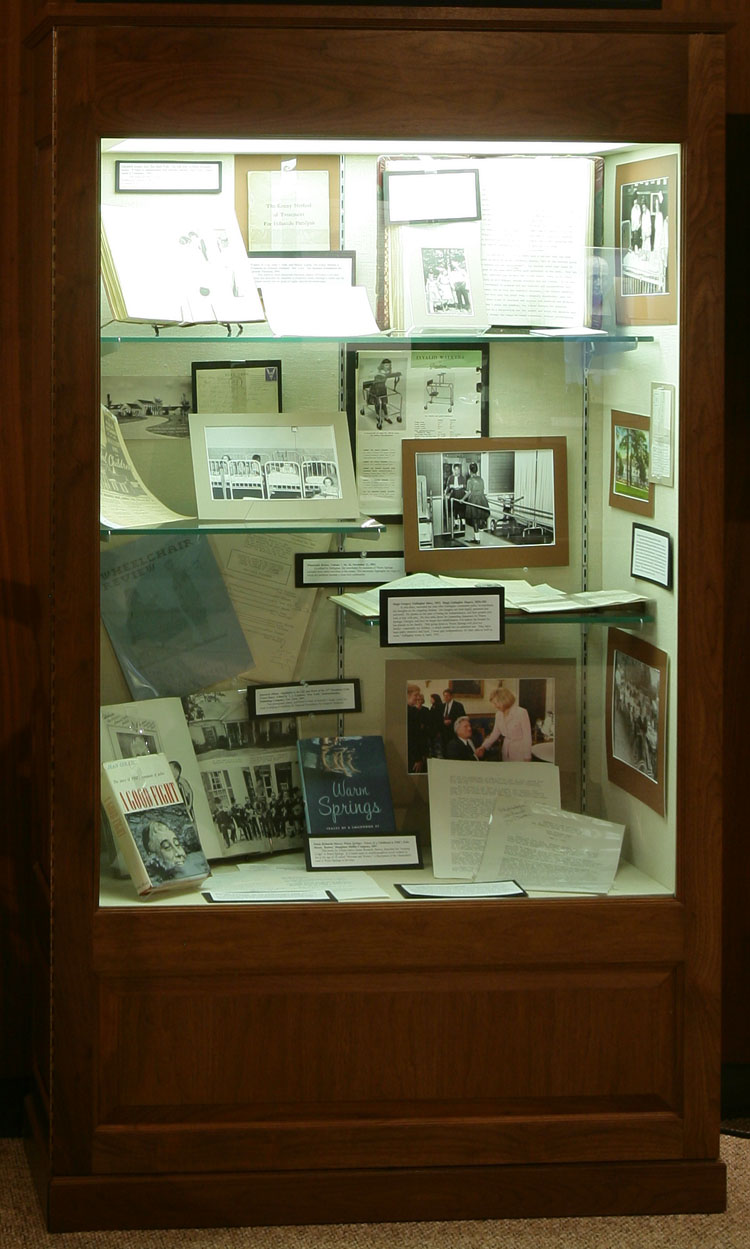
The Disabling Disease - Polio.
The Disabling Disease—Polio Poliomyelitis is an intestinal infection spread through contact with fecal waste. Symptoms are usually slight. But when the virus enters the brain stem and nervous system it becomes a dreaded disease with long-term consequences, destroying the ability of the nerves to control the body’s muscles, and resulting in paralysis which can be permanent. In the most severe cases, it can immobilize the muscles that control breathing, causing death.
Commonly known as “polio” or “infantile paralysis,” epidemics occurred regularly in the United States in the 19th and 20th centuries. Polio generally affected children and adolescents, particularly from the upper and middle classes and those living in rural areas. Two major outbreaks in 1946 and 1952 defined the country’s fear of the disease. The 1952 epidemic permanently paralyzed 21,000 and killed 3000. Between 1949 and 1952, the Toledo Contagious Disease Hospital treated 468 cases of polio in the city, with 33 deaths. In 1953, another 250 cases were reported in Toledo.
Treatments for polio were few. The iron lung kept alive those who could not breathe on their own. Methods for dealing with paralyzed and weakened limbs were debated. In 1940, Sister Elizabeth Kenny arrived in the U.S. from Australia, and promoted applying hot packs to limbs and gently exercising the muscles rather than the common treatment of immobilization. Kenny claimed remarkable “cures” using her technique.
While thousands of Americans contracted polio, it was the plight of one that led to research for a vaccine. Franklin Delano Roosevelt was born to a wealthy family in upstate New York in 1882, and quickly followed the path that his distant cousin, Theodore, had blazed to become president of the United States. But at the age of 39, Roosevelt was struck by polio during a vacation at his summer home. Roosevelt heard of a resort in Warm Springs, Georgia, where naturally heated water with high mineral content increased buoyancy. He traveled there in 1924, and was quickly impressed by his ability to move freely in the spring water. He bought the run-down resort, and soon other polio sufferers began to flock to Warm Springs.
Despite access to the best treatments of the day, Roosevelt was never able to walk again without assistance. The disease did not, however, stop his political career. Roosevelt learned to lock both legs in braces, and by leaning on his son, he could swing his legs from his hips. By doing so, he deceived many into believing that he was “cured.” In 1938, President Roosevelt created the National Foundation for Infantile Paralysis, and the foundation began a campaign to raise dimes to fund polio research. Between 1950 and 1955, the March of Dimes raised $250 million, and its money supported the work of Jonas Salk and Albert Sabin in developing vaccines.
Toledo’s polio victims were assisted by the Toledo Society for Crippled Children. In 1930, it created the first children’s convalescent center, called the Crippled Children’s Home, with the Toledo Rotary providing much financial support. Between 1931 and 1934, 37 percent of the patients were polio survivors.
In May 1935, the Toledo Society for Crippled Children decided to construct a new facility for its convalescent center on Central Avenue. It opened in 1938, and cost $300,000 to build. On its opening day, over 30,000 people toured the facility. In 1939, the name of the facility changed from the Crippled Children’s Home to the Opportunity Home.